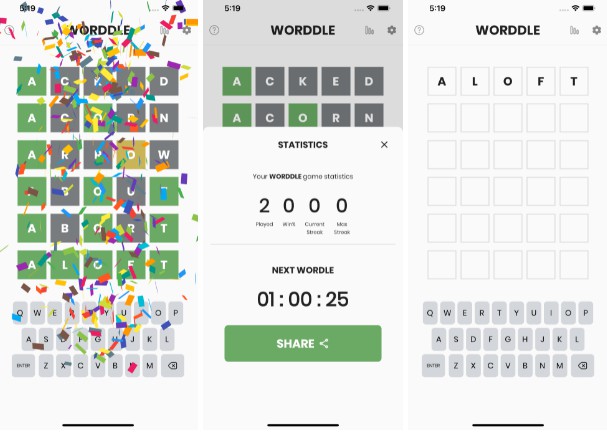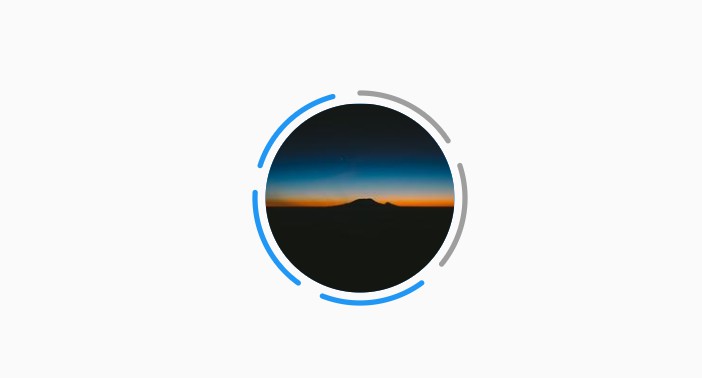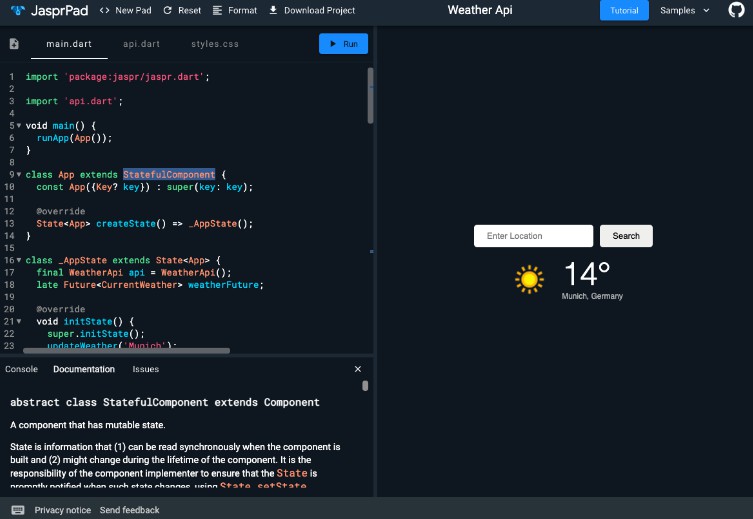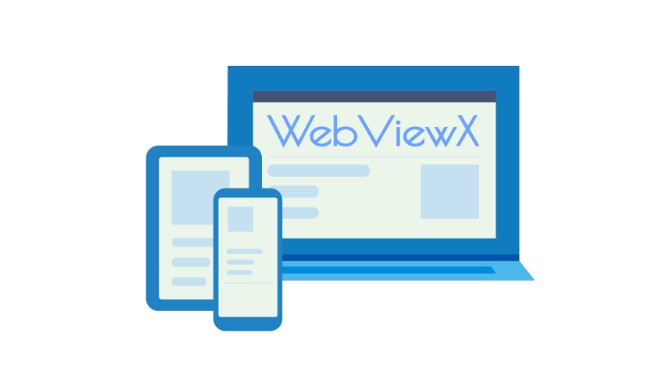dart_web
Experimental web framework for Dart. Supports SPA and SSR.
Relies on package:domino and its incremental dom rendering approach for dynamic updates.
Features:
- Server Side Rendering
- Component model similar to Flutter
- Automatic hydration of component data in client
Get Started
To get started create a new dart web app using the web-simple template with the dart create tool:
dart create -t web-simple my_web_app
cd my_web_app
Next you need to activate webdev which handles the general serving and building of the web app, and also add dart_web as a dependency:
dart pub global activate webdev
dart pub add dart_web --git-url=https://github.com/schultek/dart_web
Now it is time to create your main component, which will be the starting point of your app. Place the following code in lib/components/app.dart:
import 'package:dart_web/dart_web.dart';
class App extends StatelessComponent {
@override
Iterable<Component> build(BuildContext context) sync* {
yield DomComponent(
tag: 'p',
child: Text('Hello World'),
);
}
}
This will later render a single paragraph element with the content Hello World.
Now you need to use this component by passing it to the runApp method that is available through dart_web.
Since we are effectively building two apps – one in the browser and one on the server – we need separate entry points for this.
- For the browser app there is already a
main.dartinside theweb/folder. Change its content to the following:
import 'package:dart_web/dart_web.dart';
import 'package:my_web_app/components/app.dart';
void main() {
runApp(App(), id: 'output');
}
This will import the App component and pass it to runApp, together with the id of the root element of our app.
Notice that this is the id of the generated <div id="output"></div> in the index.html file. You can change the id as you like but it must match in both files.
- For the server app create a new
main.dartfile inside thelib/folder and insert the following:
import 'package:dart_web/dart_web.dart';
import 'components/app.dart';
void main() {
runApp(App(), id: 'output');
}
You will notice it is pretty much the same for both entrypoints, and this is by design.
However you still want to keep them separate for later, when you need to add platform specific code.
Finally, run the development server using the following command:
dart run dart_web serve
This will spin up a server at localhost:8080. You can now start developing your web app.
Also observe that the browser automatically refreshes the page when you change something in your code, like the Hello World text.
Components
dart_web uses a similar structure to Flutter in building applications.
You can define custom stateless or stateful components (not widgets) by overriding its build() method.
Since html rendering works different to flutters painting approach, here are the core aspects and differences of the component model:
-
The
build()method returns anIterable<Component>instead of a single component. This is because a html node can always have multiple child nodes.
The recommended way of using this is with a synchronous generator. Simply use thesync*keyword in the method definition andyieldone or multiple components. -
There are only two existing components that you can use:
DomComponentandText.
DomComponentrenders a html element with the given tag. You can also set an id, attributes and events. It also takes a child component.Textrenders some raw html text. It receives only a string and nothing else. Style it through the parent element(s), as you normally would in html and css.
- The
Stateof aStatefulComponentsupports preloading some data on the server. To use this feature, override theFutureOr<T?> preloadData()method. See Preloading Data.
Preloading Data
When using server side rendering, you have the ability to preload data for your components before rendering the html.
Also when initializing the app on the client, we need access to this data to keep the rendering consistent.
With dart_web this is build into the package and easy to do.
First, when defining your State class for a StatefulComponent, it takes an additional type argument referring to the data type that you want to load: class MyState extends State<MyStatefulWidget, T>.
Note that this type must be json serializable.
To load your data, override the FutureOr<T?> preloadData() method. This will only be executed on the server and can return a future.
Now when overriding initState(T? data) you receive an additional parameter containing the loaded data, both on the server and on the client.
Building
You can build your application using the following command:
dart run dart_web build
This will build the app inside the build directory.
You can choose whether to build a standalone executable or an aot or jit snapshot with the --target option.
To run your built application do:
cd build
./app




